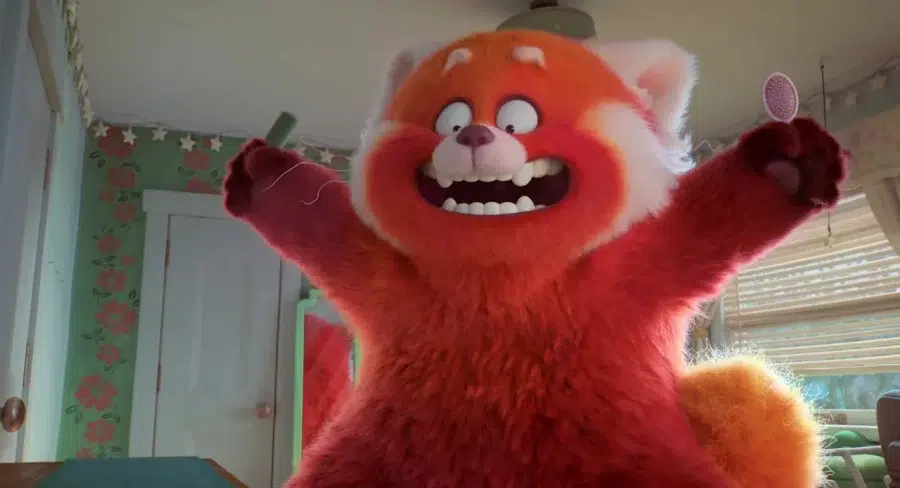Is Turning Red a new Pixar classic or a forgettable, overly energetic attempt at broader story-telling?
Pixar’s newest film Turning Red directed by Domee Shi who also directed the tear-jerking Pixar short Bao has just hit Disney+ this past Friday.
The story transports audiences to Toronto in 2002 following the escapades of 13-year-old Meilin Lee (Rosalie Chaing) and her close friends’ journey into womanhood.
After Meilin faces an embarrassing encounter at the hands of her mother (Sandra Oh) she has a nightmare that unleashes a generational family curse-the ability to turn into a red panda when emotions are harnessed.
Much to Mei’s surprise, however, her panda side allows her to experiment with more liberating parts of her personality such as her sociability, confidence, and sexuality.
The film has been highly regarded by fans and critics especially for portraying formerly “taboo” subjects for Disney-associated films. The film openly discusses menstruation and teenage hormones in an honest and relatable light.
However, the film missteps in certain story-telling aspects. Some fans have dubbed Turning Red as Pixar’s version of Lady Bird Greta Gerwig’s 2017 coming-of-age film.
Like Lady Bird, Turning Red stumbles over its intended message, fluctuating between an inspiring film featuring a strong mother-daughter relationship and a cringe-worthy montage of equating young girls finding themselves with seeing a boy band.
The film’s characters start out very strong and even feature queercoded characters but these plots are set aside to again associate womanhood with budding attraction towards boys.
Many fans have head cannoned Mei’s friend Miriam (Ava Morse) to be a lesbian and based on her centered relationship with Mei, it’s easy to predict that maybe the girls have more intense feelings for each other than just a close friendship.
Disney has recently come under fire after hypocritically pledging $5 million to LGBTQ+ rights while simultaneously receiving accusations of censoring LGBTQ+ storylines to release their films internationally in less progressive countries.
It’s rumored that Turning Red was to feature LGBTQ+ characters but once again underwent severe cuts and censorship from Disney’s executives.
It’s still refreshing to hear a Disney movie feature the phrases “sexy” and “stripper music” but much of the dialogue contains jokes and one-off quips that fall flat at best and come off as embarrassing at worst.
The soundtrack includes iconic early 2000s hits but cuts the trailer song “Larger Than Life” by The Backstreet Boys. The film would have benefited from the implementation of songs like these to strengthen certain scenes that unfortunately didn’t carry the same weight in the trailer.
While the first half of the film is engaging enough, by the third act viewers realize that the culmination of events has resulted in a messy, poorly developed climax that features some interesting concepts but ultimately backpedals to include crude jokes and an over-the-top resolution.
Even with these flaws, the film has spoken volumes to fans in the Asian community feeling like they have a film that replicates many experiences they had when they were kids.
The film has also received criticism from older white male viewers stating that they felt isolated from the viewing experience which is ironic because that’s essentially the point.
Pixar and more importantly Disney needs to keep creating narratives that center around marginalized groups who have for so long been denied their time in the spotlight.
With more focus on these characters, Pixar needs to delegate ample time to develop these stories instead of falling back on formulaic plots that don’t represent the larger story they are trying to tell.
You can stream Turning Red now on Disney+

